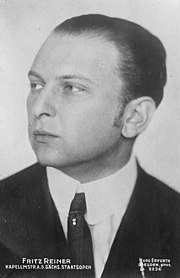Design
Design
Personality
Chart Properties
Your Cross represents the specific theme of your life. This cross embodies your unique potential & the lessons you're here to learn, providing a roadmap to fulfilling your life purpose.
We use the UTC birth time and date to do the calculations required to generate your Human Design chart.
Buy Tokens
Pay as you use, no expiry and no subscription required.Hendrik Werkman's Biography
Dutch artist, typographer, printer of De Ploeg.
Werkman was an autodidact. He was the second of three brothers. His father Klaas Jacob Werkman (20 Dec 1847, Leens – 9 Nov 1891, Leens) was a veterinarian. His mother Grietien Alingh Louwes (7 Jan 1850, Leens – 14 March 1931, Groningen) was his second wife, after his first wife Grietje Voet (1851-1873) had died from childbirth.
After the early death of the father, the family settled in Groningen. Her he followed the HBS. He joined the recital club, Demosthenes, did comical songs and played the clarinet and violin. In the third year his mother took him of school. He had a 10 for Dutch, but failed on many other courses, including drawing. He got a learning job with a printer, publisher and bookshop in Sappemeer. He also started photographing and worked as a journalist for the local Oppenheim’s paper and since 1 May 1905 for the Nieuwe Groninger Courant.
In 1908 he started a printing business in Groningen at the Peperstraat 5. In 1912 he moved to the larger Pelsterstraat 31-33 and employed some 20 people. In 1919 he joined “De PLoeg”, an avant garde artistic group in Groningen. Because of his business he was able to support many of them, including Jan Wiegers. Via Wiegers he came into contact with the German expressionists like Ernst Ludwig Kirchner.
Between 1923 and 1940 he published on many international exhibitions with other avant-gardists like Hans Arp, Piet Mondriaan, Wassily Kandinsky.
End 1940, after the German invasion of the Netherlands, Werkman, together with minister August Henkels (1906-1975), Adri Buning (1896-1948) and Ate Zuithoff (1912-2009), began publishing illustrated poems and stories through their clandestine publishing house “De Blauwe Schuit” (The Blue Barge). They art of Werkman and the texts were meant as a spiritual support for the suppressed. Most famous became his series “Chassidische Legenden” (Hassidic stories) based texts of “Die Legende des Baalschem” of “Ich und Du” prophet “Martin Buber.
The Sicherheitsdienst (SD) arrested Werkman on 13 March 1945 for illegal printing. He and nine other prisoners were executed in the Dunes of Bakkeveen on 10 April 1945 by the Dutch SD policeman Peter Schaap. Most of his last paintings and prints, which the SD had confiscated, were lost in the fire that broke out in the SD headquarters during the liberation of Groningen by the Canadian forces, only three days later..
In November 1945 Willem Sandberg showed his work in the Stedelijk Museum Amsterdam. Sandberg was his collector since 1943.
Personal
After a long period of engagement (31 March 1907), Werkman married on 10 april 1909 at Groningen Jansje Cremer (25 Aug 1885 – 2 April 1917, Groningen). They got a daughter Grieta Sophia (19 Febr 1911) and a son Hendrik Nicolaas Werkman (20 June 1912). Their youngest daughter Sophia Gerharda (Fie) Werkman (28 Oct 1915, Groningen – 8 Nov 2002) became an artist.
After Jansjes sudden death from brain haemorrhage, he married on 8 May 1918 in Beilen the school teacher “Nel” Supheert (1888-1979), They got a son Casper Klaas Johannes Vincent on 7 April 1921). They divorced 30 May 1930 in Groningen. On 5 November 1936 he married Margaretha Cornelia “Greet” van Leeuwen (1898-1990).
Link to Wikipedia
Your Cross represents the specific theme of your life. This cross embodies your unique potential & the lessons you're here to learn, providing a roadmap to fulfilling your life purpose.
We use the UTC birth time and date to do the calculations required to generate your Human Design chart.






